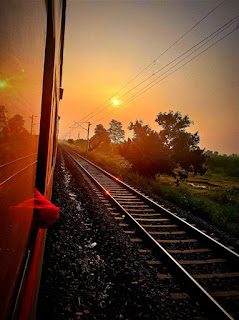Food: The Flavor Bridge Between 13 and 26
I was dry-roasting flattened rice (popularly known as poha), and it teleported me straight to my childhood. There were two versions of it: how my mother made it and how my maternal aunt (my father’s elder brother’s wife) made it. Nostalgic, right?
Which do I prefer? Take a guess, and I’ll reveal it later in the post.
I consider myself an above-average cook, and my colleagues and friends who have tasted my food seem to agree. You might be wondering about my secret ingredient.
Love? (Yes, that's important.)
Time? (That's my personal secret.)
In a world where fast food tops the charts, slow-cooked meals are a luxury that only a few can afford—both in terms of cooking and eating. In my kitchen, nothing leaves the frying pan in a hurry—not even boiling water.
In a city of Old Monk and Budweiser, what gets me high is the aroma of slowly heating garlic on the lowest possible flame in olive oil, topped with mixed herbs and oregano.
By now, you must think you’ve guessed which version of dry-roasting I prefer. And you're almost right—but not quite. It's the method I learned from my maternal aunt.
In fact, most of my food habits and cooking inspiration come from her kitchen. It's from her that I inherited my proud Gujarati palate. Whether it's dal topped with a bit of jaggery or poha mixed with a touch of sugar, those flavor combinations are enough to take me captive.
Here are the two versions of dry-roasted flattened rice I set out to make:
In my mom's version, the rice remains white after roasting but gets warmer from the time spent in the pan. When you toss them, they make the distinct crashing sound of two firm grains hitting each other. The process takes no more than 10 minutes.
In my maternal aunt's version, the rice undergoes a transformation. It swells in volume, becoming lighter in taste and weight. When you taste it, you shouldn't be able to tell it's not puffed rice. The process takes at least 15 minutes on a slow flame, depending on the quantity you're making.
Just like the dry-roasted puffed rice, everything I cook—whether it's dal, poha, or sabudana khichdi—tastes as if it came straight out of my aunt's kitchen.
Mind you, this resemblance found its way into my cooking through a tough covid quarantine.
Just as revolutionary ideas can’t be curtailed by jails, culinary skills can’t be confined by curfews imposed due to invisible virus.
On the days like today, I reflect on how such a restricted environment managed to shape a pretty decent cook. Had I been granted a little more freedom, the world might not have narrowly missed out on a superstar chef!


Comments
Post a Comment
Hey, let me know how you feel about this post here